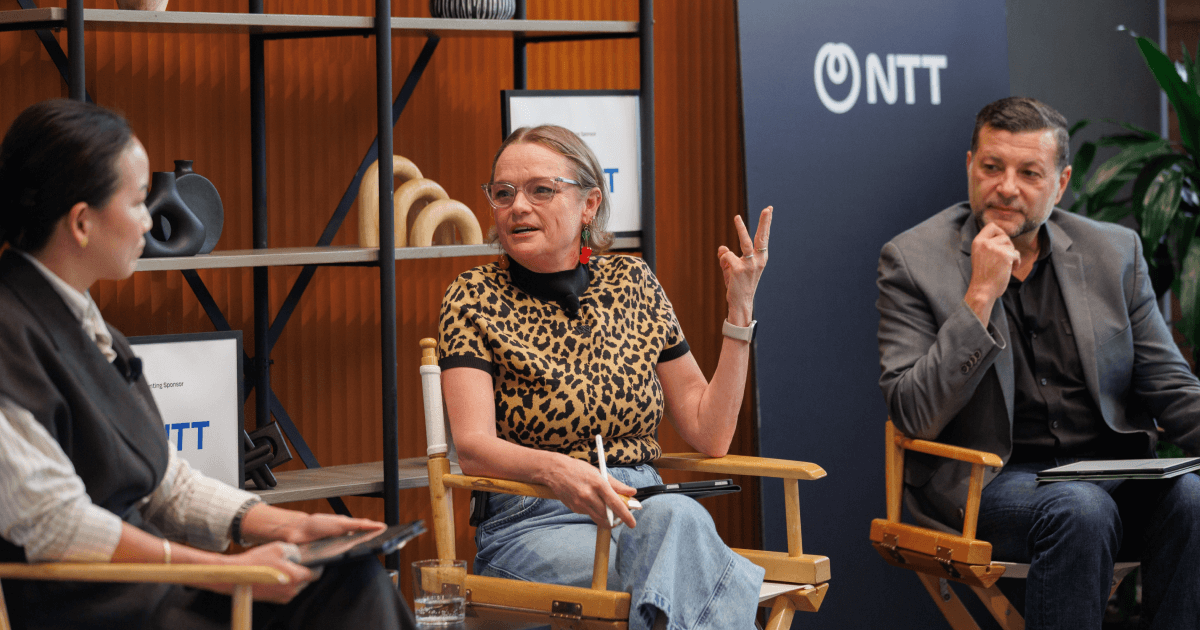Unlearning linear: The new economics of knowledge work



Something feels “off” in the world right now. It’s a bit unsettling, something you can’t quite put your finger on. While change and chaos are constant throughout human history, we're approaching (or already at) an inflection point that's different from what we've seen before. Here's why: historically, inflection points were spaced far enough apart that our technology, social structures, and our own neural wiring had time to adapt. Today, we're pushing past the limits of our human and organizational capacity to absorb change. While this inflection point is challenging, it presents an opportunity to shift away from our historical understanding of linear scale, and seek a practical application in how we design, build, and deliver
We've been here before. Looking back to historical precedence reminds us that when inflection points occur, we adapt and adjust. In the 1800’s when train travel became prevalent, it reset mental models for how long it took to get between points. Victorians feared that speed, noise, and jostling of the brain would drive train passengers insane. In the early 1900’s when cars first arrived on the scene, their speeds were capped at 20 MPH, slower than the top speed of a horse. And by the mid-1900s, breaking the sound barrier was approached incrementally — Mach 0.02 at a time — for fear of catastrophic failure. Two things were in play: Fear of change, and uncharted territory. In hindsight, we were at an inflection point in the rate of change.
The human hour: Our traditional unit of scale
To understand why this moment is different, let's look at how we've historically thought about scaling work. Consider horsepower — it started as a practical way to measure work output. Need to plow a bigger field? Add more horses. We eventually standardized it (550 pounds moving through one foot per second), and it became a unit of measure. Today, we still use "horsepower" even though there are no actual horses under our car hoods or pulling our rockets across the sky.
In knowledge work, the human hour has served the same function. Since the 1975 publication of The Mythical Man-Month: Essays on Software Engineering, which taught us that adding people to a late software project makes it later, we've used human time as our base unit of scale. Even as we've created tools to make humans more efficient, we've still scaled linearly — more work meant adding headcount.
The breaking point
Now we're witnessing something unprecedented: the fundamental breaking of expectations around human productivity. As I recently discussed in ZDNet, every six to twelve months, our assumptions about how much a person can accomplish in a given timeframe shatter. This isn't a one-time shift — it's continuous disruption.
Here's what makes this particularly challenging:
- Humans and organizations have natural limits to how much change they can absorb
- The larger the organization, the harder it is to adapt
- You can no longer ignore or half-heartedly implement advancing technologies
- If your systems are already struggling, this inflection point will be devastating — you won’t realize the value of the advances of the last fifteen years.
Ultimately, the progress curve isn’t linear. You won’t be left behind linearly, but exponentially.

I live this dichotomy daily because I work with so many different clients. In the morning, I'm helping companies solve technology problems we had answers for a decade ago. By afternoon, I'm designing synthetic digital coworkers for the future. Then I find myself on email threads with thirteen people trying to solve basic administrative tasks. Talk about whiplash. At Launch, we always say we meet our clients where they are. My favorite part of this approach is in not just meeting you - but challenging you – about where you need to go.
The AI native future
The greatest challenge - and opportunity - lies in the fundamental shift away from human hours as our unit of scale. As I explained in DevOps Digest, when confronted with problems, our instinct has been to add headcount. But unlike replacing actual horses, replacing highly paid humans creates significant societal friction. It makes skilled and extensively trained professionals anxious, myself included. The way AI development tools are being positioned - as productivity enhancers or junior-to-senior-developer accelerators - misses the point. This isn't about linear scaling anymore; just as modern engines aren't about adding more horses. These tools represent a new paradigm of scalability for skilled work. So how do we respond?
The winners and losers
History shows us that these transitions hit a breaking point when the cost-benefit equation becomes undeniable. We've entered the in-between time — what I believe the Great Resignation really signaled. Two forces collided: the emergence of breakthrough AI capabilities and a large workforce structured around linear human scaling.
The winners in this great reset will be:
- AI natives: The upcoming generation who intuitively grasp and build with these new tools
- Flexible workers: Those willing to continually reinvent themselves and their skills
The most disrupted will be those trying to maintain the middle ground, particularly knowledge workers. This isn't just about jobs; it's about economic advancement and prestige that many have worked hard to achieve.
Looking forward
Until we break free from the human hour as our fundamental unit of work scale, we'll be stuck trying to make the old system go faster. You can't win a race against AI by building faster horses.
In part two, we'll explore the opportunities these changes present. What happens when you remove the constraint of linear scaling human hours, and can access unlimited "horsepower?” What new limitations will we discover? Most importantly, what conscious decisions will we need to make about ceding control to these new systems?
To be continued in part 2.



